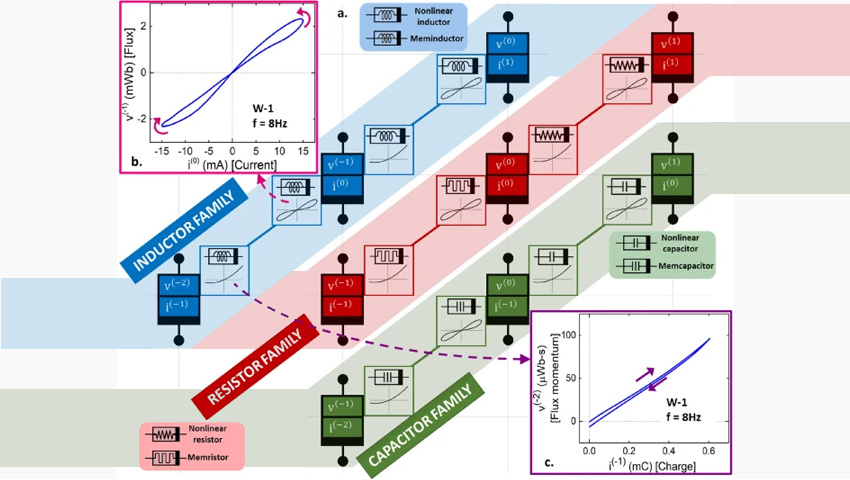
The meminductor: researchers have discovered a new element of electronic circuits
Researchers from the Department of Electrical and Computer Engineering at Texas University have discovered a new circuit element known as a meminductor.
Previously, memristors and memcapacitors were discovered, and now the meminductor completes this line. The prefix "mem" signifies that these elements can store and remember previous current or voltage values, and change their properties accordingly.
Memristors are electronic devices that were first discovered by scientist Leon Chua in 1971. The classical elements of an electric circuit are known to be resistors, capacitors, and inductors. Chua predicted that the memristor would be the fourth fundamental element of electronic circuits. However, it was only in 2008 that researchers at HP Labs created the first functional memristor.
A memristor is a device that can change its resistance based on the strength of the current flowing through it. This means that a memristor can store information and be programmed to alter its resistance. Memristors also have the ability to "remember" their previous state. This unique characteristic makes memristors ideal for use in memory devices, artificial intelligence technologies, and neural networks.
In addition to the memristor, the existence of memcapacitors and meminductors was also anticipated. While the memcapacitor was physically realized in 2019, there had been no definitive announcement regarding the implementation of the meminductor until now.
Abhiram Dinavahi, Alexandre Yamamoto, and H. Rusty Harris demonstrated the first physical evidence of meminductance in their article. They created a passive system with two terminals, primarily consisting of an electromagnet interacting with a pair of permanent magnets. Using this system, the researchers studied the magnetic flux density and the intensity of the magnetizing field of the inductor element in the circuit. Thus, the existence of a narrowed hysteresis curve inside the inductor was proven, leading to its memristive state or memory-like nature, by the same definition as the memristor and memcapacitor. It was demonstrated that the implemented element possesses the three required properties of a meminductor. Now its place in the periodic table of circuit elements is discussed through the extension of the memristor genealogy to meminductors.
